Tips to speed up your browser on Windows 10
Internet speed is one of the most important characteristics of a computer - so important that some operating systems like Chrome OS today rely almost entirely on it. Windows 10 isn't perfect at that point, but you can still do the following to make the Web experience much faster and smoother. Here, TipsMake.com will guide ways to set up Windows to improve your browsing speed.
1. Turn off P2P Delivery Optimization
Here's something you probably didn't know about Windows 10, and it sounds pretty intimidating. There's an option in Windows 10 that can be enabled by default, linking your PC to a P2P network handled by Microsoft, uploading installed Windows updates, and distributing them to speed up updates on the network. family and for strangers online.
Locally this means that if you have the Windows update installed on one PC, its bits can be passed over the update on another PC on the same network, saving bandwidth. The downside is that the system will do the same thing but for other Windows users all over the Internet, connecting your PC to a P2P network helps Windows increase the download speed for strangers but reduce the bandwidth of your computer. friend.
So you should turn it off. Press Windows + I to turn on Settings. In the list, open Update & Security .

Go to Delivery Optimization in the menu on the left. Pay attention to the Allow downloads from other PCs section :
- Change On to Off if you want to disable the feature
- Or you keep On and select PCs on my local network if you want to share bandwidth with other computers in your family
- Do not choose PCs on my local network, and PCs on the Internet .

2. Turn Windows Auto-Tuning feature off or on
Windows Auto-Tuning is a feature that caused various responses from users about the speed of Internet browsing. It is a feature that automatically adjusts buffer size and latency for applications based on TCP communication with the Internet.
Although Microsoft has said that disabling this feature will slow down your internet speed, users with older hardware and weak connections have reported that disabling it can improve Internet speed. On the contrary, other users (usually on powerful PCs) say that turning on Auto-Tuning greatly increases their Internet speed.
Therefore, you need to manually check if your computer is suitable for this feature or not. Here's how to enable / disable Auto-Tuning.
Enter ' cmd ' in the Start search box, then open the Command Prompt application with administrator privileges ( Run as administrator ).
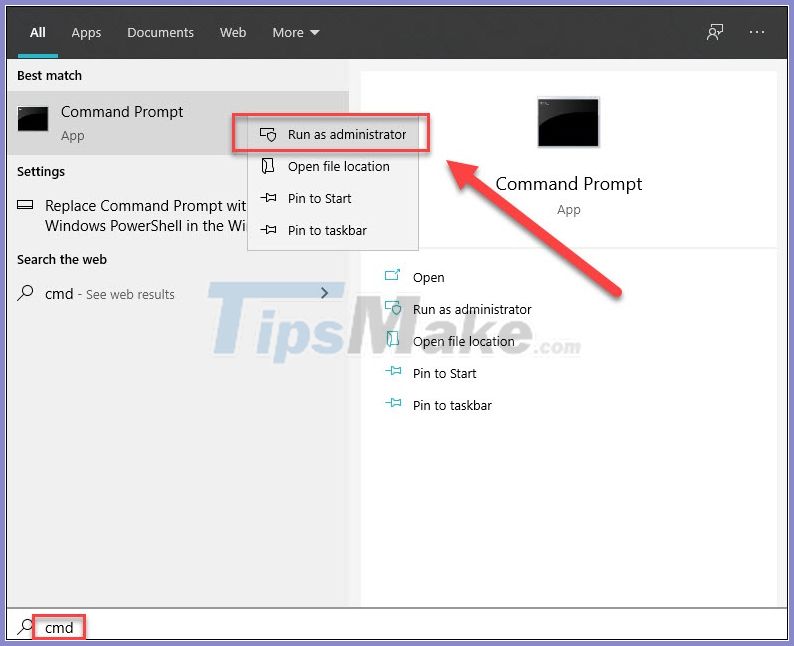
When the Command Prompt window appears, enter the following command and then Enter :
netsh interface tcp show global
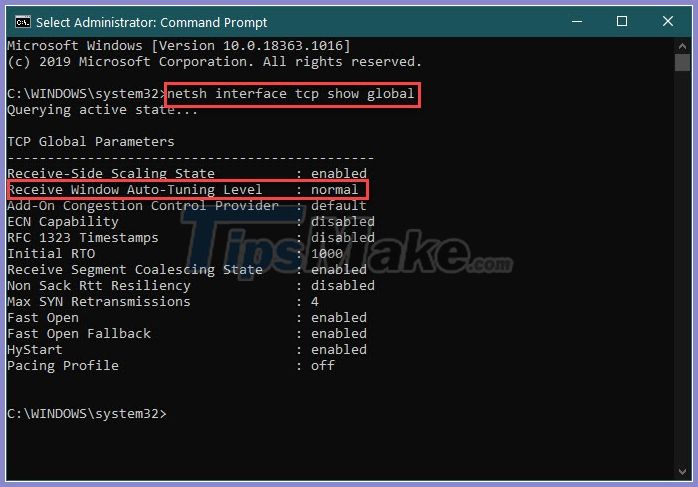
Check what status the Receive Window Auto-Tuning Level line is in.
If it says Normal and wants to turn it off, enter the following:
netsh int tcp set global autotuninglevel = disabled
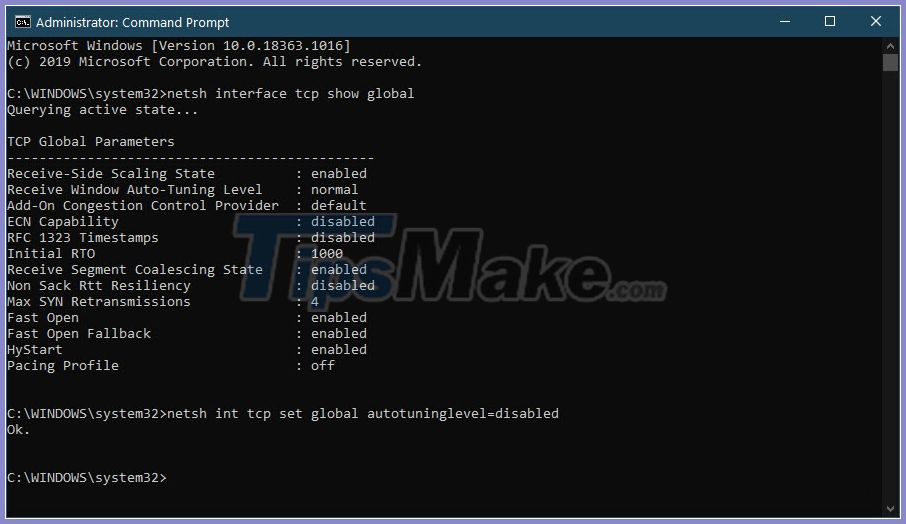
Otherwise, if Auto-Tuning indicates disabled and you want to enable the feature, enter:
netsh int tcp set global autotuninglevel = normal
Now run a speed test to see if it makes a difference. If it speeds up everything, great! If things slowed down, then just do the reverse command to get everything back to normal.
3. Use Resource Monitor to check network resources
Resource Monitor is a good person. You can quickly and easily check which processes and apps on Windows 10 are using the most resources in terms of CPU, RAM, and - network bandwidth. You can find all of these in Resource Monitor.
To open Resource Monitor, press Windows + R and type resmon in the box.
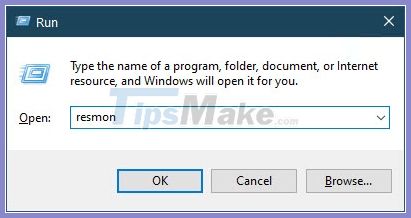
Switch to the Network tab and you will know which services or applications are consuming a lot of network resources (ranking from high to low).
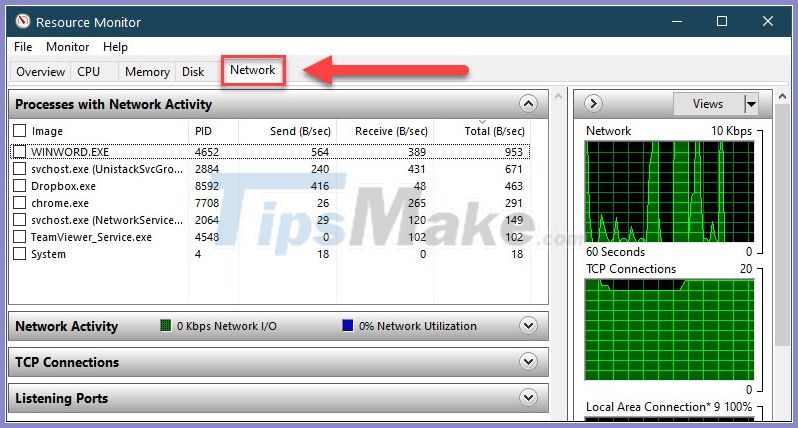
To turn off resource-consuming applications, just check the box next to it, right-click and select End Process .
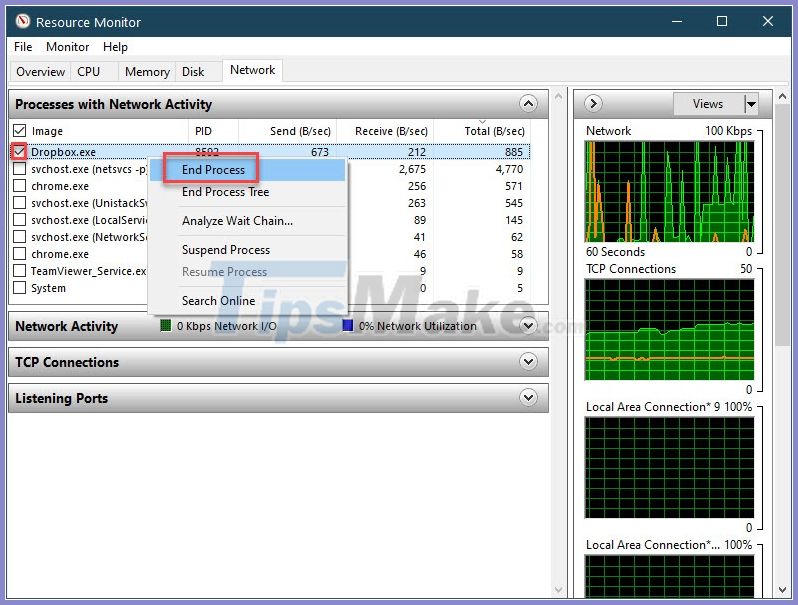
4. Turn off background applications
The Windows apps that you download from the Microsoft store as well as the countless Windows apps that come pre-installed on your system are one of the biggest culprits in the background. By default, these applications are always allowed to use the Internet so that they can receive updates.
To stop these apps from running in the background. Open Settings (Windows + I) >> Privacy .
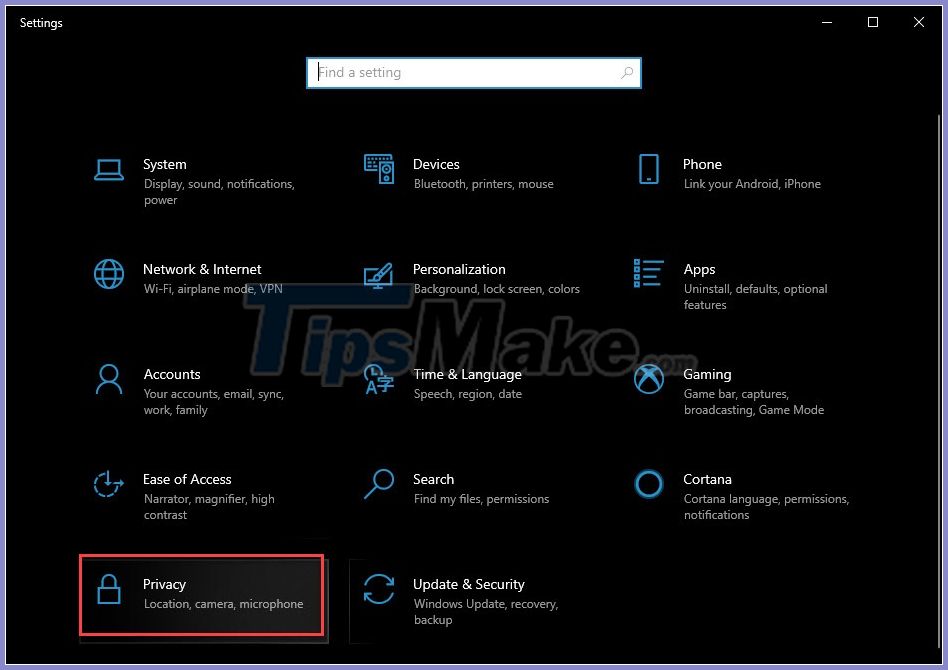
Scroll down the left menu and select Background Apps .
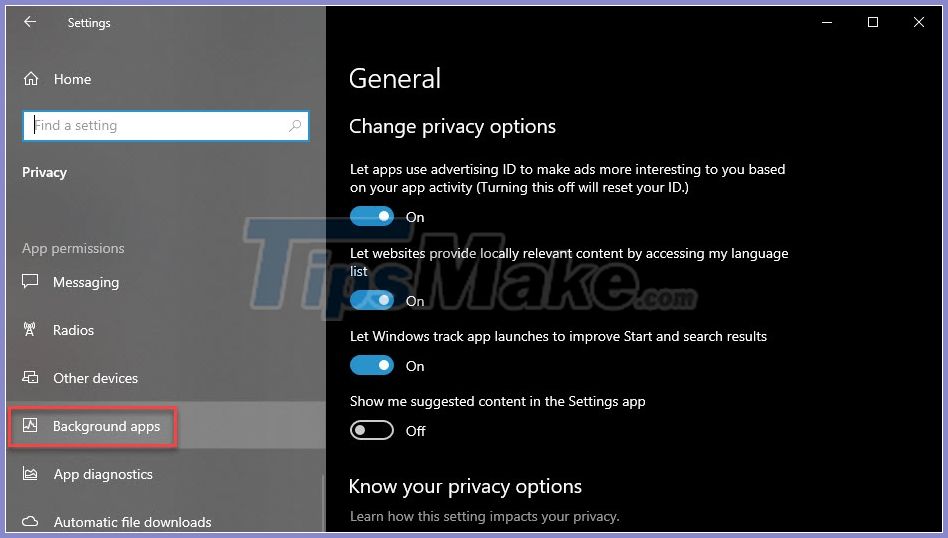
Here you can:
- Switch On to Off under Let apps run in the background to prevent all apps from running in the background
- Switch On to Off for a certain app to disable that app only.
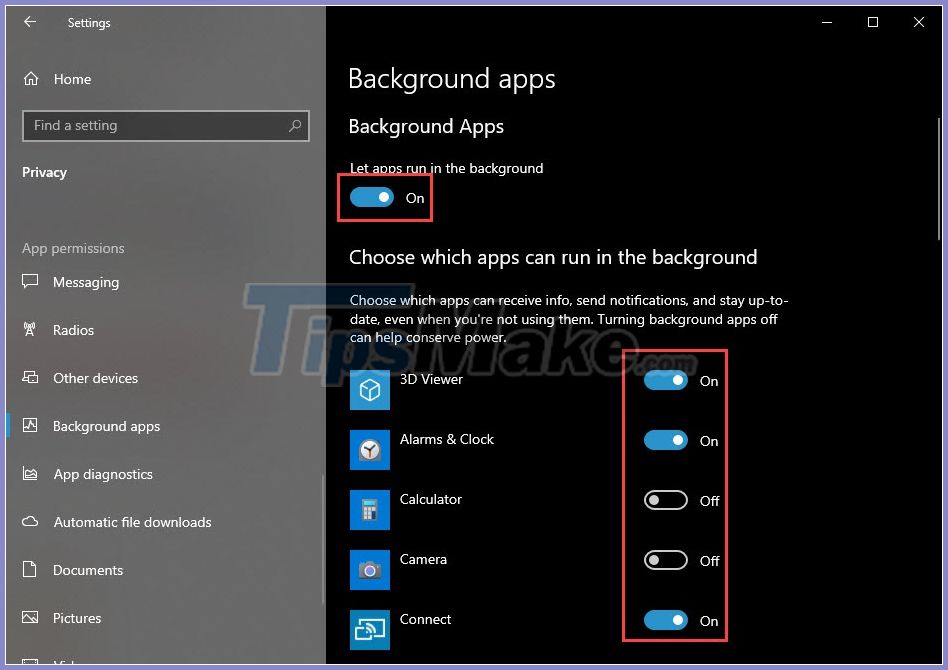
Conclude
Above are some little tricks you can do to speed up your browsing (and internet speed in general) in Windows 10.
Good luck!
You should read it
- 7 tips to speed up Tor browser
- How to create WiFi hotspot on UC Browser web browser
- 7 mistakes should be avoided when checking Wi-Fi speed
- Trick to improve browsing speed with Chrome browser
- Want to load page speed on Edge browser faster, enable this feature
- How to fix the slow running state of Chrome browser
- Experience the Yandex Browser of Russia
- Tips to speed up Firefox browser faster, lighter, more stable
May be interested
- 5 Registry tricks speed up Windows 8 computer faster
 it's undeniable that the boot speeds of windows 8 and windows 8.1 are much faster than previous windows versions, windows 7 and windows vista. however, like previous versions, after using for a while, your windows 8 computer will also slow down. here are some registry tips to speed up your windows 8 computer faster.
it's undeniable that the boot speeds of windows 8 and windows 8.1 are much faster than previous windows versions, windows 7 and windows vista. however, like previous versions, after using for a while, your windows 8 computer will also slow down. here are some registry tips to speed up your windows 8 computer faster. - To increase productivity and speed of Vivaldi browser, you should not ignore the tips and tricks later
 vivaldi browser comes with many built-in updated and optimized integrated features. some features are not available in extensions on other browsers. this article will give you some vivaldi tips and tricks for speeding up and performance.
vivaldi browser comes with many built-in updated and optimized integrated features. some features are not available in extensions on other browsers. this article will give you some vivaldi tips and tricks for speeding up and performance. - Tips to speed up the gaming machine
 computers when purchased are usually smooth, applications work well. but after a period of use, users will notice the speed of the machine is reduced relatively: sluggish machine when running the game, not guaranteed frame rate. hardware upgrades are not always the best solution.
computers when purchased are usually smooth, applications work well. but after a period of use, users will notice the speed of the machine is reduced relatively: sluggish machine when running the game, not guaranteed frame rate. hardware upgrades are not always the best solution. - Trick to improve browsing speed with Chrome browser
 chrome is one of the best browsers out there, which is no longer controversial. however, like some other browsers, suddenly on a beautiful day when you are surfing the web on chrome, the browsing speed is slow, and even hangs ...
chrome is one of the best browsers out there, which is no longer controversial. however, like some other browsers, suddenly on a beautiful day when you are surfing the web on chrome, the browsing speed is slow, and even hangs ... - How to speed up Windows 10 startup
 windows 10 boots slowly like a crawl, is there any way to speed up windows 10 when booting? yes, here are ways to speed up windows 10 boot for you, very simple and easy to do.
windows 10 boots slowly like a crawl, is there any way to speed up windows 10 when booting? yes, here are ways to speed up windows 10 boot for you, very simple and easy to do. - 12 ways to speed up Windows 10 extremely effectively 2021
 in this article i will guide you 12 simple tips to speed up windows 10, make your computer run faster.
in this article i will guide you 12 simple tips to speed up windows 10, make your computer run faster. - Small changes help slow Windows computers speed up significantly
 when you first bought your computer, it booted up in seconds and ran like a dream. but things have changed over time.
when you first bought your computer, it booted up in seconds and ran like a dream. but things have changed over time. - 5 factors that affect browser speed that few people know about
 taking more than a few seconds to search, chat with friends or check the latest news can be frustrating. if your browser is consistently slow, check the following to restore its original speed.
taking more than a few seconds to search, chat with friends or check the latest news can be frustrating. if your browser is consistently slow, check the following to restore its original speed. - Chrome 10 hurdles about browser speed
 the new version of chrome's chrome browser has significantly improved speed, password synchronization, and has a new options tab.
the new version of chrome's chrome browser has significantly improved speed, password synchronization, and has a new options tab. - To speed up Chrome browser, apply these tricks
 like other browsers, after a long time of use, the chrome browser will become more and more slow because there must be everything, utilities, plugins, even viruses .... with the speed of day such a slowdown, during use sometimes makes users feel uncomfortable and frustrating.
like other browsers, after a long time of use, the chrome browser will become more and more slow because there must be everything, utilities, plugins, even viruses .... with the speed of day such a slowdown, during use sometimes makes users feel uncomfortable and frustrating.










 Chrome Extensions for Developers
Chrome Extensions for Developers Err-Connection-Refused error and Err_Connection_Closed error on Chrome
Err-Connection-Refused error and Err_Connection_Closed error on Chrome How to fix the error site can't be reached on the Google Chrome browser
How to fix the error site can't be reached on the Google Chrome browser How to change the background image for the Chrome browser
How to change the background image for the Chrome browser How to browse multiple websites with the same Chrome tab
How to browse multiple websites with the same Chrome tab How to quickly lock Microsoft Edge Chromium
How to quickly lock Microsoft Edge Chromium